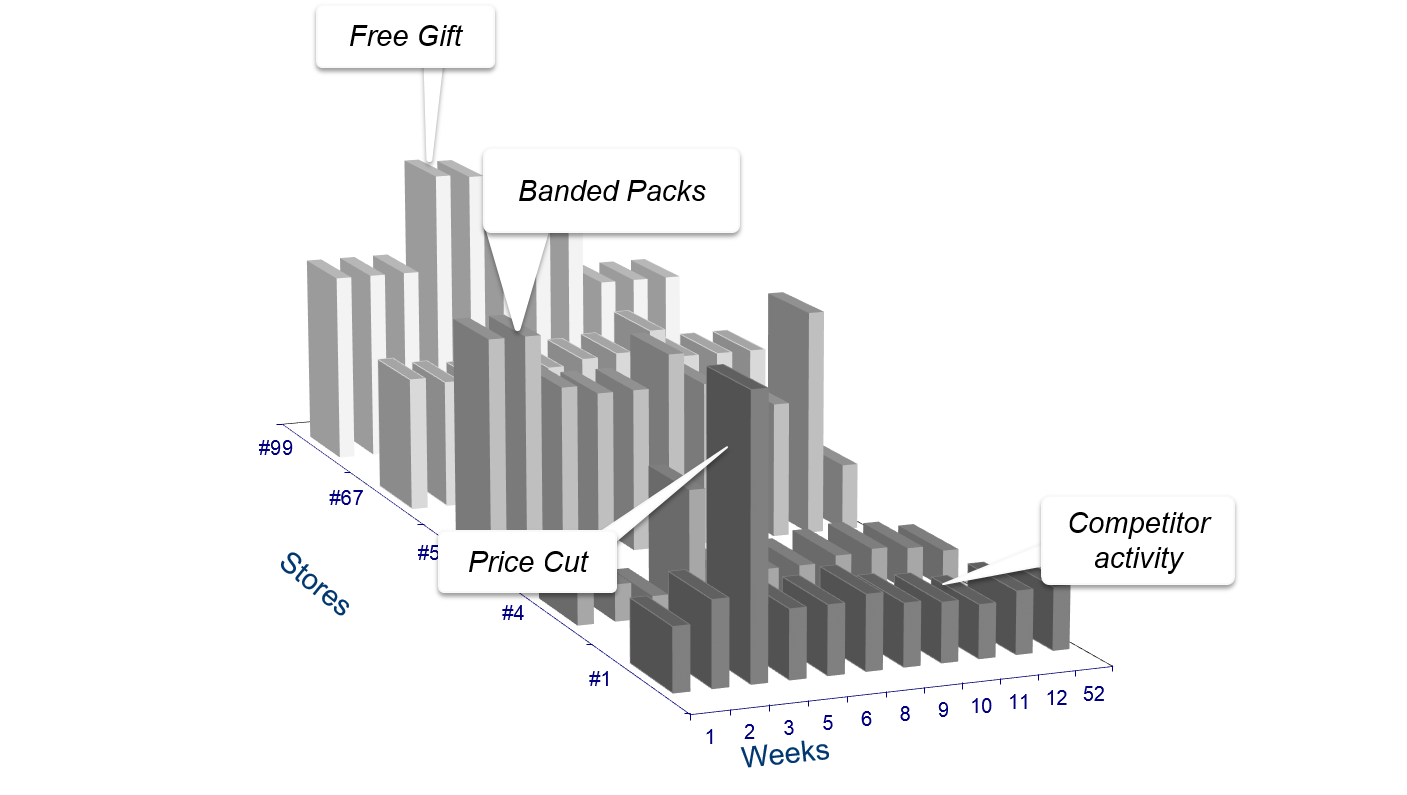Store Level Modelling of Promotions

Exhibit 17.10 Store level modelling allows the modeller to
isolate and measure the impact of price and promotion activities at store
level.
Higher levels of disaggregation in market modelling can
lead to more robust and reliable results. For example, if a market model includes data from 500
stores over a 2-year period, this would provide 52,000 individual observations, resulting in a
large number of degrees of freedom. By modelling each store individually (as shown in
Exhibit 17.10), the modeller can cut through the noise and
better isolate and measure the effects of pricing and promotional activities at the store level.
When store-level data is unavailable or inaccessible, market modellers may have to
work with chain or channel level data, which may introduce some inaccuracies due to variations
that occur at the store level. Despite these potential inaccuracies, chain and channel level data
can still yield useful and relatively reliable models.
In most markets, relatively clean, weekly store-level point-of-sale (POS) scan data
is now readily available, which has improved the accuracy of the raw data from retailers. As a
result, accuracy issues with the data are less of a concern than they were in the past.